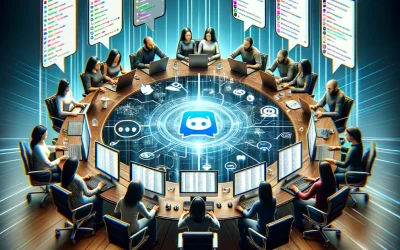Community engagement is the cornerstone of any successful online community, whether it be a community forum, Slack channel, or Discord channel.
Achieving meaningful engagements with your community members can be challenging, but it is essential for the growth and sustainability of your community.
This blog post will explore practical activities, metrics, and best practices for community engagement, focusing on various aspects of community engagement work, such as community engagement organizations, community engagement theory, and community engagement framework.
We will also touch upon community engagement opportunities and principles, as well as intentional communities looking for members.
Understanding Community Engagement
Defining community engagement can be complex, as it encompasses various elements such as community service, interaction, and contributions.
A general definition of community engagement is the process of working collaboratively with community members to address issues that affect the community, fostering partnerships and shared decision-making.
Community engagement examples can include volunteer opportunities, community events, and online discussions. The goals of community engagement are to build trust, increase participation, and create lasting, positive change.
Want a video overview? Check this one out:
Types of Community Engagement
There are several types of community engagement, ranging from passive involvement to active collaboration. These types include:
- Inform: Sharing information with community members to keep them informed about issues, plans, and opportunities.
- Consult: Seeking community members’ opinions and feedback on specific topics or proposals.
- Involve: Actively engaging community members in the decision-making process, usually through workshops, focus groups, or surveys.
- Collaborate: Partnering with community members to develop and implement projects, programs, or initiatives.
- Empower: Supporting community members in leading their initiatives, making decisions, and implementing solutions to issues they identify.
OK then, so how do you build engaging and drive these different types of engagement? Let’s explore…
Practical Activities for Community Engagement
Creating opportunities for community members to engage with your community is crucial. Some practical activities for community engagement include:
- Hosting virtual events, such as webinars, workshops, or panel discussions.
- Creating a community newsletter or blog to keep members informed about community news and events.
- Encouraging member-generated content, such as articles, videos, or artwork.
- Organizing volunteer opportunities or community service 101 initiatives to support local causes.
- Developing mentorship programs to connect experienced members with newer members.
- Creating subgroups, channels, or threads for specific topics or interests, fostering smaller, focused conversations.
The key here is experimentation…try lots of different ideas to explore different ways in which you can add value.
You should also check out this video which some more practical tips:
Community Engagement Metrics
I remember once being at an airport bar and I got chatting to a guy next to me. He said, “If you ain’t measuring it, it doesn’t exist.”
He wasn’t wrong.
Measuring the success of your community engagement initiatives is essential for improvement and growth. Some key metrics to track include:
- Active users: The number of members actively participating in your community (posting, commenting, reacting, etc.).
- Retention rate: The percentage of members who remain active in your community over time.
- Content contribution: The number of posts, comments, or reactions generated by community members.
- Event attendance: The number of community members attending your events or participating in your programs.
- Member satisfaction: The overall satisfaction of community members, usually gathered through surveys or feedback forms.
Depending on your community platform, be sure to measure all of these metrics to constantly evaluate how your community is growing.
Not just the how, the why: some best practices
The key to great engagement isn’t just about adding value, but it is how you participate. Make sure you focus on:
- Be inclusive: Ensure that all community members, regardless of their background, feel welcomed and valued. Actively seek out and address barriers to participation.
- Prioritize clear communication: Keep communication channels open, transparent, and accessible to all members. Provide information in multiple formats and languages, if necessary.
- Build trust: Develop genuine relationships with community members by being transparent, honest, and open to feedback. Show that you genuinely care about their opinions and needs.
- Foster collaboration: Encourage community members to collaborate with each other and with your organization. Promote a sense of shared ownership and responsibility for the community’s success.
- Continuously evaluate and improve: Regularly assess the effectiveness of your community engagement efforts using the metrics discussed earlier. Make adjustments as needed to better serve your community’s needs.
There are many ways to engage with your community, whether through events, programs, or communication channels.
Try some of the following:
- Organize a virtual town hall meeting to discuss pressing issues and gather community input.
- Host a community-wide contest, such as a photo competition, with prizes for the winners.
- Create a community calendar to keep members informed about upcoming events and opportunities.
- Establish a community ambassador program, where dedicated members help promote the community and welcome new members.
- Organize a hackathon or ideation session to tackle specific challenges within the community.
Challenges and Opportunities in Community Engagement
Building and maintaining an engaged community can be challenging, but there are also many opportunities for growth and development.
Some common challenges include:
- Member retention: Keeping members engaged and active over time can be difficult. Regularly evaluate your community engagement initiatives to address any issues and improve the experience for members.
- Diversity and inclusion: Ensuring that your community is welcoming and inclusive to all members can be an ongoing challenge. Continuously assess your community’s demographics, culture, and policies to identify areas for improvement.
- Time and resources: Managing a community and its engagement initiatives can be time-consuming and resource-intensive. Prioritize your efforts and seek additional support, such as volunteers or community engagement organizations, when needed.
One of the main goals of community engagement is to address the potentially negative issues that affect your community.
This requires you to be proactive in identifying and understanding the challenges your community members face.
Some approaches to addressing these issues include:
- Conduct regular community surveys to gather feedback and insights from members.
- Encourage open dialogue and discussions on pressing topics, creating safe spaces for members to share their experiences and perspectives.
- Collaborate with community members to develop and implement solutions to the identified issues.
- Seek external partnerships and resources to support your community’s efforts in addressing these challenges.
Celebrating Success and Recognizing Contributions
Acknowledging the achievements and contributions of community members is crucial for maintaining engagement and fostering a sense of belonging.
By celebrating success and recognizing the efforts of individuals and groups within your community, you can create a positive, supportive environment that encourages continued participation.
Some ways to celebrate and recognize your community members include:
- Share success stories and testimonials from community members on your communication channels, such as newsletters or social media.
- Organize awards or recognition ceremonies to honor outstanding contributions and achievements.
- Provide badges, certificates, or other tokens of appreciation to members who have made significant contributions to the community.
- Encourage peer recognition by creating channels or threads where members can express gratitude and appreciation for each other’s efforts.
In summary, building community engagement in a community forum, Slack channel, or Discord channel requires a strategic approach, practical activities, and ongoing evaluation.
By understanding the types of community engagement, implementing best practices, and leveraging the support of community engagement services, you can create a thriving, engaged community that addresses the issues affecting its members and celebrates their achievements.
Frequently Asked Questions
What is community engagement?
Community engagement is the process of involving community members in decision-making, problem-solving, and collaborative efforts to address issues that impact the community. In online forums and chat channels, it involves creating opportunities for members to participate, contribute, and connect with others.
Why is community engagement important for online forums and chat channels?
Because it fosters a sense of belonging, encourages active participation, and helps to create a vibrant, thriving community. Engaged members are more likely to contribute valuable content, share ideas, and support one another, ultimately contributing to the growth and success of the community.
What are the different types of community engagement?
There are several types of community engagement, including informing, consulting, involving, collaborating, and empowering. These types range from passive involvement (e.g., sharing information) to active collaboration and decision-making (e.g., partnering with community members to develop and implement projects).
How can I create an inclusive and welcoming environment for community members?
To create an inclusive and welcoming environment, ensure that all members feel valued, respected, and heard. Encourage diversity, establish clear guidelines for behavior, and proactively address barriers to participation. Provide accessible communication channels and be responsive to the needs and concerns of members.
What are some practical activities to increase community engagement?
Practical activities to increase community engagement include hosting virtual events, organizing community challenges or contests, encouraging member-generated content, creating subgroups or channels for specific interests, and providing opportunities for members to volunteer or contribute to community projects.
How can I encourage collaboration and interaction among community members?
Encourage collaboration and interaction by fostering a supportive and inclusive environment, providing clear guidelines for communication, and creating opportunities for members to work together on projects or discussions. Offer tools and platforms that facilitate collaboration, such as shared documents, project management software, or designated discussion channels.
What are some examples of successful community engagement initiatives?
Successful community engagement initiatives can include organizing virtual town hall meetings, hosting webinars or workshops, creating mentorship programs, developing a community newsletter, and establishing a community ambassador program.
How can I measure the success of my community engagement efforts?
Measure the success of your community engagement efforts by tracking key metrics such as active users, retention rate, content contribution, event attendance, and member satisfaction. Regularly evaluate these metrics to identify areas for improvement and make adjustments as needed.
What are some challenges associated with building community engagement?
Challenges associated with building community engagement include member retention, diversity and inclusion, time and resource constraints, managing conflict, and ensuring the relevance and quality of content and activities.
How can I address the challenges of maintaining an engaged community?
Address these challenges by continuously evaluating and improving your community engagement efforts, prioritizing inclusivity, providing clear communication and guidelines, seeking external support (e.g., community engagement organizations), and celebrating the achievements and contributions of community members.
What are the best practices for managing an online community?
Best practices for managing an online community include fostering inclusivity, prioritizing clear communication, building trust, fostering collaboration, and continuously evaluating and improving your community engagement efforts.
How can I create a sense of ownership and shared responsibility among community members?
Encourage a sense of ownership and shared responsibility by involving community members in decision-making, providing opportunities for members to lead projects or initiatives, and promoting collaboration and support among members.
How can I ensure that my community remains relevant and engaging over time?
Keep your community relevant and engaging by staying informed about members’ interests and needs, adapting your content and activities accordingly, and continuously seeking feedback and input from members.
How can I effectively moderate my online community to maintain a positive environment?
Moderate your community effectively by establishing clear guidelines for behavior, consistently enforcing those guidelines, and providing channels for members to report any violations or concerns. Train moderators to handle conflicts and issues in a fair and respectful manner, and create a transparent process for addressing any disputes.
How can I leverage community engagement services or companies to support my efforts?
Community engagement services or companies can offer expertise, resources, and support to help you manage and grow your community. They can assist with strategy development, moderation, analytics and reporting, and training or workshops.
What role do community engagement organizations play in supporting online communities?
Community engagement organizations can provide guidance, resources, and support to help online communities build and maintain engagement. They can offer expertise in best practices, strategy development, and implementation, as well as support for specific initiatives or projects.
How can I use events to foster community engagement?
Events, such as virtual town halls, webinars, workshops, and contests, can provide opportunities for members to connect, learn, and contribute to the community. Promote and facilitate event participation by providing clear information, accessible platforms, and opportunities for interaction and collaboration.
How can I promote diversity and inclusion within my online community?
Promote diversity and inclusion by actively seeking and welcoming members from diverse backgrounds, addressing barriers to participation, and creating a safe and supportive environment for all members. Encourage diverse perspectives and provide opportunities for members to share their experiences and insights.
How can I encourage members to contribute content and ideas to the community?
Encourage content contribution by creating a supportive environment, providing clear guidelines and expectations, and offering incentives or recognition for quality contributions. Provide platforms and tools that facilitate content creation and sharing, and actively promote member-generated content within the community.
What are some ways to recognize and reward community members for their engagement and contributions?
Recognize and reward community members through public acknowledgment (e.g., in newsletters or social media), awards or recognition ceremonies, badges or certificates, and peer recognition channels. Offer tangible incentives or prizes for contests or challenges to motivate participation.
How can I effectively handle conflict and negative behavior within my online community?
Handle conflict and negative behavior by establishing clear guidelines for behavior, consistently enforcing those guidelines, and providing channels for members to report any violations or concerns. Train moderators to handle conflicts and issues in a fair and respectful manner, and create a transparent process for addressing any disputes.
What are some tools or platforms that can help facilitate community engagement?
Tools and platforms that can facilitate community engagement include project management software, collaboration tools, shared documents, communication platforms (e.g., Slack, Discord), and event hosting platforms (e.g., Zoom, Webex).
How can I use analytics to inform and improve my community engagement efforts?
Use analytics to track key engagement metrics (e.g., active users, retention rate, content contribution), identify trends, and uncover areas for improvement. Regularly evaluate these metrics to inform your community engagement strategy and make adjustments as needed.
How can I create a sense of community identity and pride among members?
Foster community identity and pride by developing a shared vision and values, promoting community achievements and successes, and encouraging members to contribute and collaborate on community projects and initiatives.
How can I encourage members to take on leadership roles within the community?
Encourage leadership by providing opportunities for members to lead projects, initiatives, or subgroups, offering mentorship or training programs, and recognizing and promoting members who demonstrate strong leadership qualities.
What are some ways to maintain member interest and engagement over time?
Maintain member interest and engagement by continuously adapting your content and activities to align with members’ interests and needs, seeking feedback and input from members, and providing opportunities for members to connect, learn, and grow within the community.
How can I ensure that my community remains a safe and respectful space for all members?
Ensure a safe and respectful space by establishing and enforcing clear guidelines for behavior, addressing any violations or concerns promptly and fairly, and providing channels for members to report issues or conflicts. Create a culture of respect and support by fostering open communication and promoting inclusivity.
How can I involve community members in decision-making and problem-solving?
Involve community members in decision-making and problem-solving by creating opportunities for input and feedback, such as surveys, polls, or discussion forums. Encourage collaboration on projects or initiatives, and provide platforms and tools that facilitate group problem-solving and decision-making.
How can I leverage partnerships and external resources to support my community engagement efforts?
Leverage partnerships and external resources by seeking collaborations with organizations or individuals who share your community’s goals and values, tapping into external expertise and resources, and exploring grant or funding opportunities to support specific community projects or initiatives.
How can I continuously improve and adapt my community engagement strategy to meet the evolving needs of my community?
Continuously improve and adapt your community engagement strategy by regularly evaluating your engagement metrics, seeking feedback and input from community members, staying informed about new trends and best practices, and being open to change and innovation. Use this information to refine your strategy and make adjustments as needed to better serve your community’s needs.








